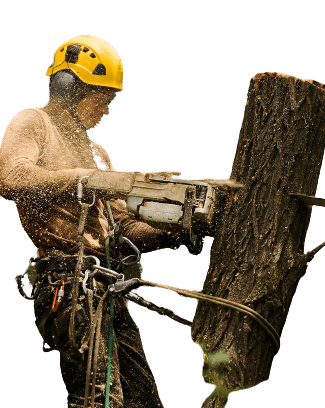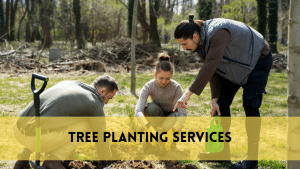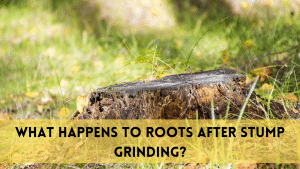What is Tree Cabling and Bracing?
Tree cabling and bracing are arboricultural practices that offer structural support to trees, particularly those that show evidence of weakness, injury, or structural compromise. These procedures entail installing cables, bracing, or hardware into trees to improve their stability and lessen the danger of collapse.
Cabling is commonly used to control excessive movement and support weak or possibly dangerous branch unions by deliberately placing high-strength cables between important limbs or leaders of a tree. Bracing, on the other hand, often entails inserting rods or braces into weak branch unions to reinforce and strengthen them.
Certified arborists use these procedures after carefully assessing a tree’s condition and identifying spots where additional support is required to prevent limb failure or tree collapse. Overall, tree cabling and bracing serve as preventative methods to safeguard trees, property, and people by preserving the health and structural integrity of trees.
Why tree cabling and bracing is important
Structural Support: Trees can develop weak areas, splits, or many trunks over time, compromising their structural integrity. Cabling and bracing give extra support to these weaker locations, lowering the danger of limb failure or tree collapse.
Safety Measures: Cabling and bracing assist to reduce possible problems by strengthening susceptible areas of trees. This decreases the chance of falling branches or trees, protecting both property and people from accidents or damage during severe weather conditions.
Tree Health Preservation: These strategies contribute to the general health and lifespan of trees. They help prevent future damage caused by stress, environmental conditions, or structural deficiencies, allowing the tree to continue developing healthily.
Preventive Measures: Certified arborists use cabling and bracing to prevent possible problems connected with fragile tree structures. Regular inspections and adequate reinforcing can reduce the likelihood of tree failure, ensuring a safer environment.
Tree cabling and bracing
Techniques for Cabling
Dynamic cabling :Flexible wires used in dynamic cabling allow trees to move organically in reaction to wind or other environmental influences. These flexible wires are deliberately placed between large limbs or branches, providing support while allowing for controlled movement. This strategy tries to alleviate tension on weak spots, reducing undue strain while allowing the tree to expand naturally.
Static Cabling Technique: Static cabling, on the other hand, entails the use of hard wires that limit tree movement to a certain amount. These wires are inserted to limit the movement of susceptible limbs or portions in order to offer additional structural support. Static cabling tries to decrease stress and avoid additional damage by immobilizing certain portions of the tree.
Arborists examine the tree’s condition and structural demands to identify the best cabling strategy, guaranteeing adequate support while preserving the tree’s health and natural development.
Bracing Techniques
Rod Bracing: Arborists put rods or braces into trees’ weak branch unions or crotches. These rods provide additional support by tightening the link between weak or broken branches, minimizing the danger of separation or failure.
Cable Bracing: Like rod bracing, cable bracing entails attaching cables across branches or limbs. These cables aid in the support of weak unions or heavy branches by eliminating excessive movement and distributing weight more evenly.
Hardware Bracing: Using specialized hardware like bolts, screws, or braces, arborists secure weak or split sections of trees. This hardware reinforces the compromised areas, preventing further splitting and promoting structural stability.
Arborists evaluate the tree’s condition as well as its individual structural flaws to identify the best bracing approach for optimum reinforcement and long-term stability.
Factors Affecting Stability
Environmental consideration
Weather Conditions: Strong winds, storms, heavy snow, or ice accumulation can all cause severe stress on trees, potentially causing structural damage or failure.
Surrounding Vegetation: Overcrowding or competition with surrounding plants can limit a tree’s development and stability by limiting access to sunshine, nutrients, and space.
Tree Health Considerations:
Disease or decay: Trees damaged by diseases or decay may have weaker structures, making them more prone to breakage or failure.
Pest infestation: Insect or pest infestations can undermine the structural integrity of a tree, reducing its stability.
Services:
Characteristics of Structure:
Tree Species: Some tree species have inherently weaker structures or growth patterns that may need supplementary support.
Age and Growth Rate: Older trees or those with rapid growth may develop structural concerns that need stabilization.
Arborists thoroughly assess these aspects to determine the individual needs of each tree, finding weaknesses and advising suitable remedies such as cabling and bracing to improve stability and assure safety.
Professional Expertise
Hiring Certified Arborists:
Certified arborists have specific expertise and training in tree care and management. Their expertise includes assessing tree health, diagnosing structural flaws, and advising appropriate cabling and bracing measures. Hiring trained personnel enables accurate evaluations and effective use of strategies.
Choosing the Correct Techniques:
Expertise in selecting proper cabling and bracing solutions is essential. Arborists analyze elements such as tree type, health, environmental conditions, and structural flaws to decide the most effective approaches. This ensures that the methods used provide optimal support while reducing any potential dangers or negative consequences on the tree’s health.
Accuracy and upkeep:
Professionals carry out cabling and bracing processes with accuracy, ensuring that hardware is placed and adjusted appropriately. In addition, they arrange regular inspections and maintenance to check the system’s integrity and make modifications as needed to preserve tree stability over time.
FAQS
How long does cabling and bracing installation take?
The length varies depending on the size and intricacy of the tree, but it normally ranges from a few hours to a day.
Is tree cabling and bracing suitable for all tree types?
While generally applicable, certain tree species or conditions may not benefit from these techniques.
How much does tree cabling and bracing cost?
Costs vary depending on factors such as tree size, health, and procedures required. Estimates should be obtained from arborists.
How frequently should cabling and bracing be inspected?
Regular inspections every 2-3 years verify the integrity of the system and handle any necessary improvements.
Can cabling and bracing help to keep tree diseases at bay?
While they cannot prevent illnesses directly, they can reduce the risk of structural damage caused by disease development.
Are there any dangers to cabling and bracing?
Improper installation or disregard of maintenance might be dangerous. Certified professionals minimize such risks.
Conclusion
Finally, tree cabling and bracing are essential activities in arboriculture, critical for preserving tree stability and assuring safety in a variety of situations. These procedures provide critical structural support, especially in trees that show indicators of weakening, injury, or possible risks. By addressing structural weaknesses using cabling and bracing, these solutions reduce the dangers associated with falling branches or tree collapse, protecting both property and people. Furthermore, they contribute greatly to tree health and longevity by avoiding additional damage and promoting healthy development.



